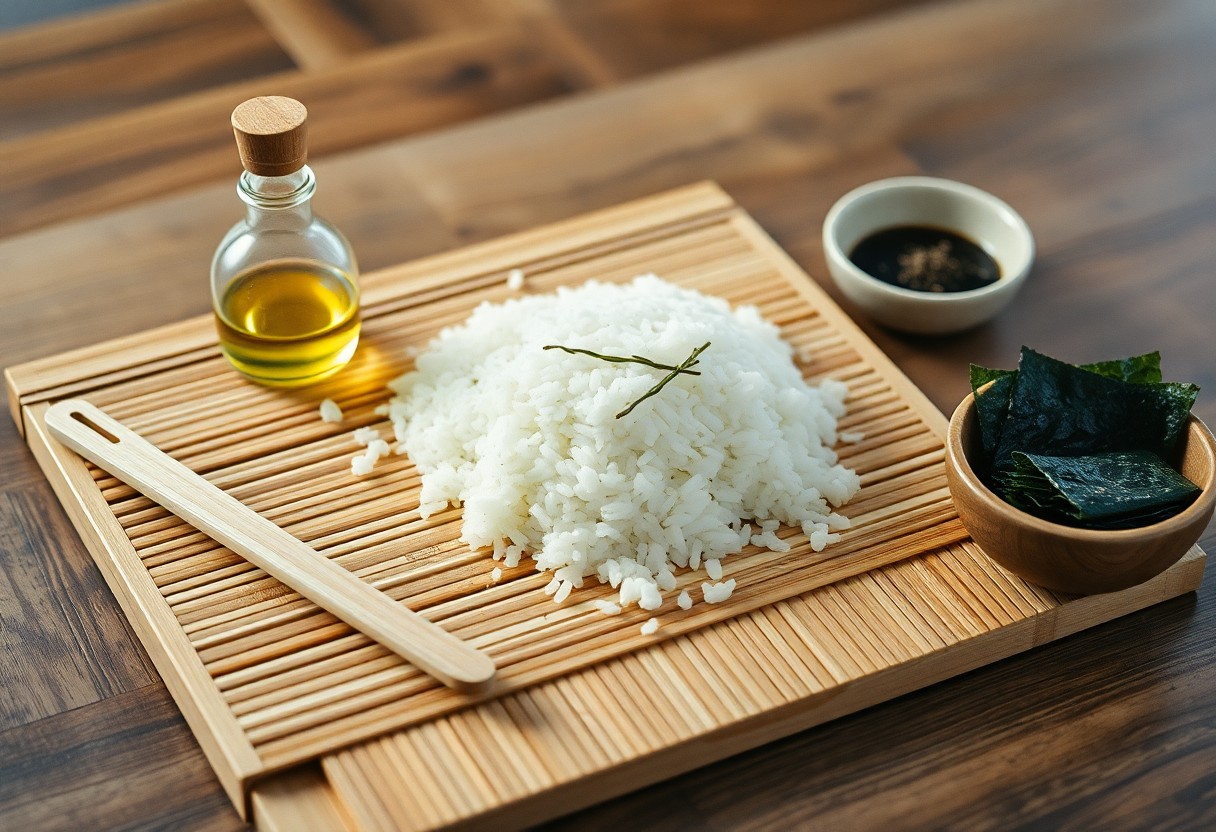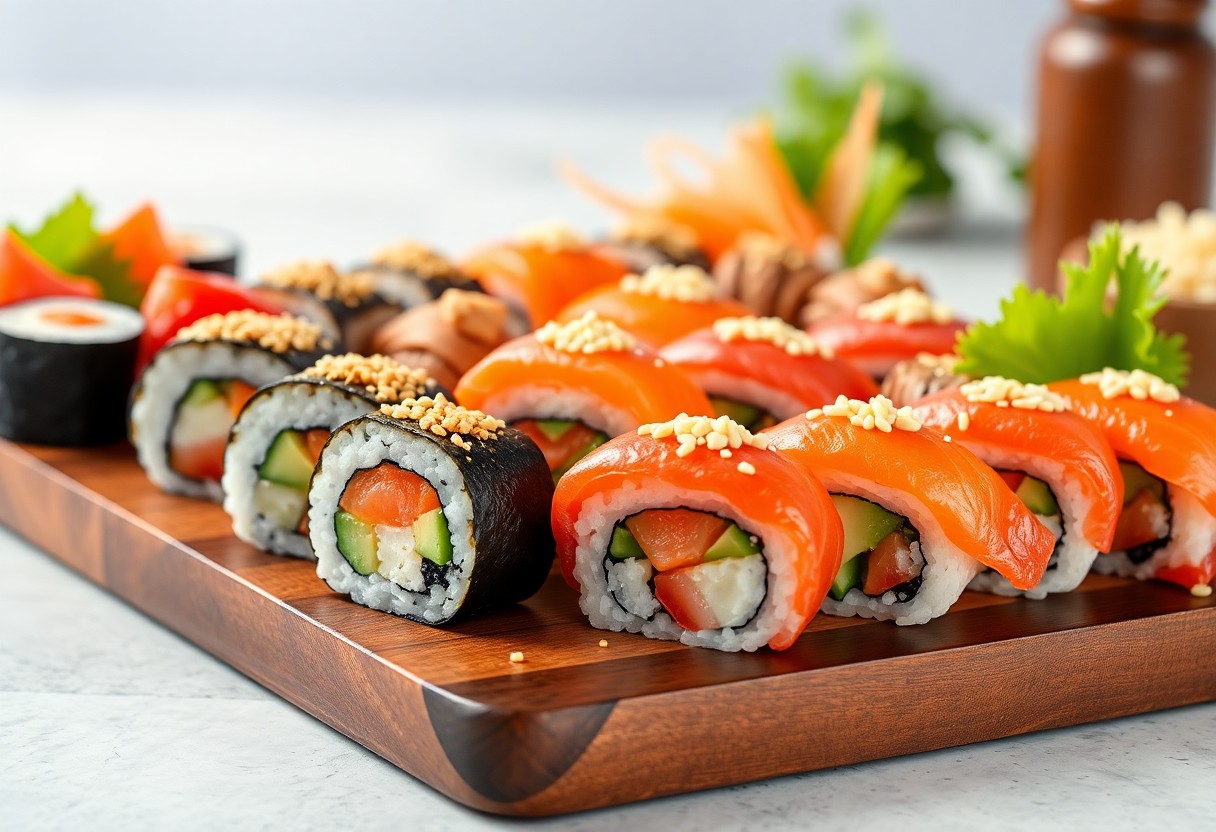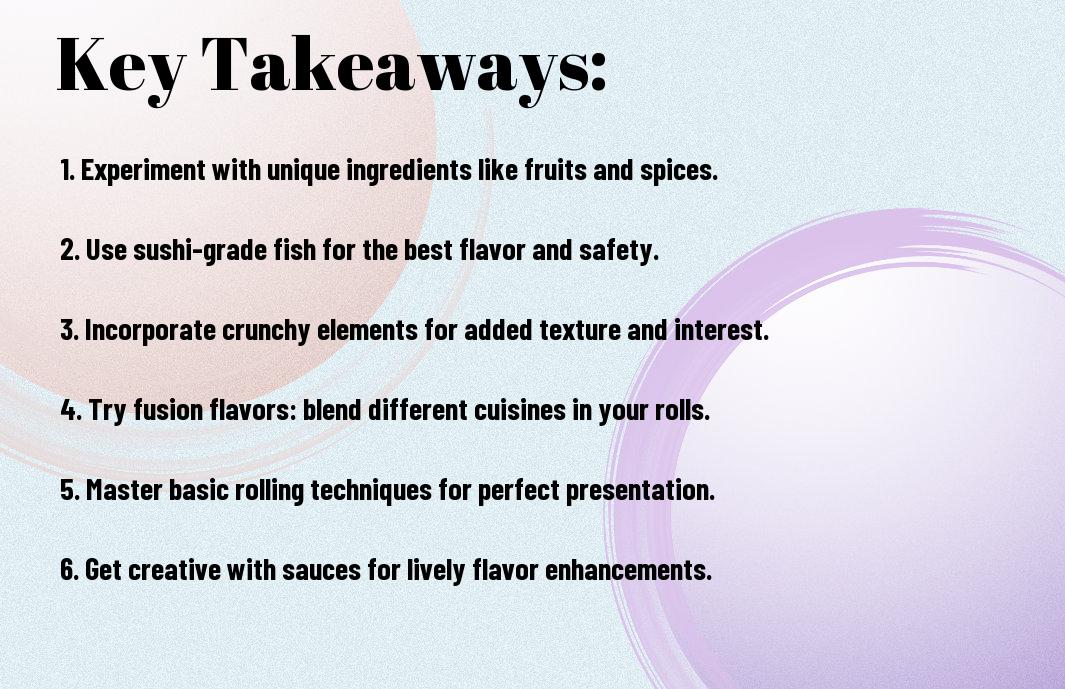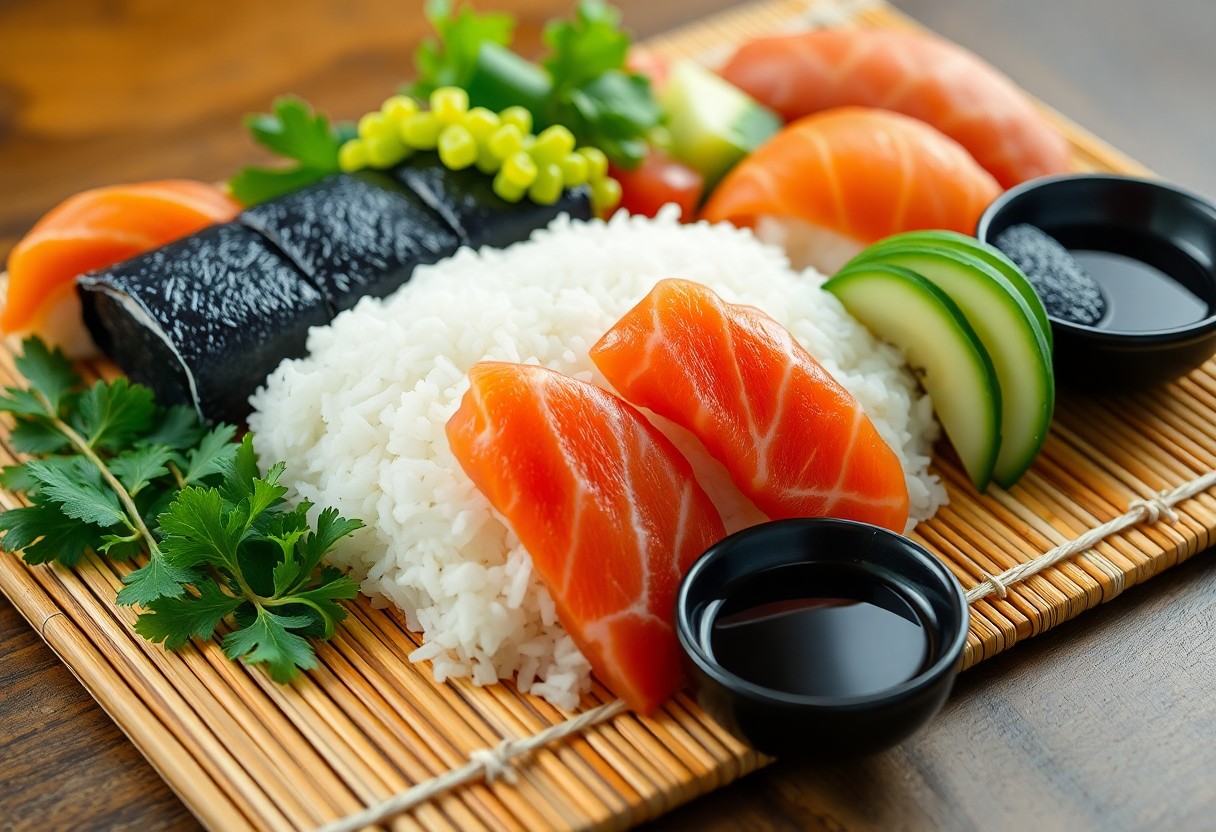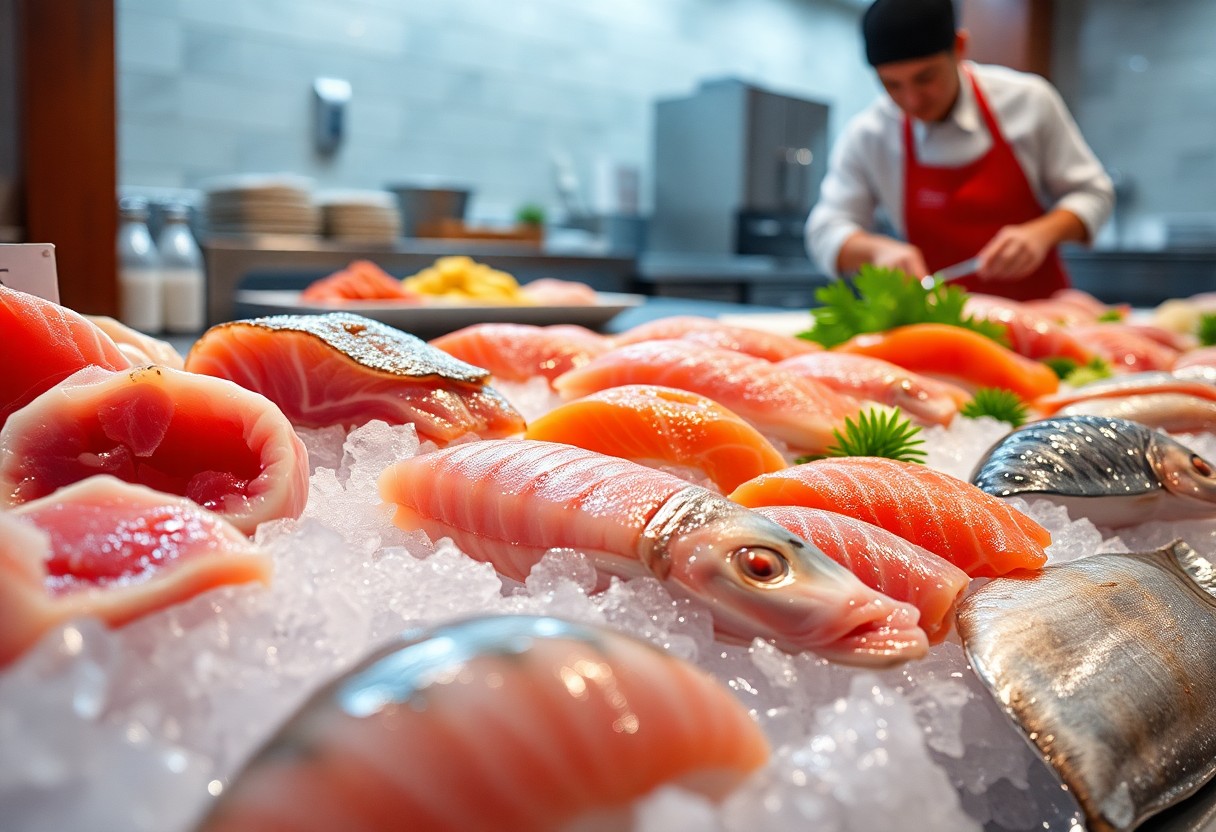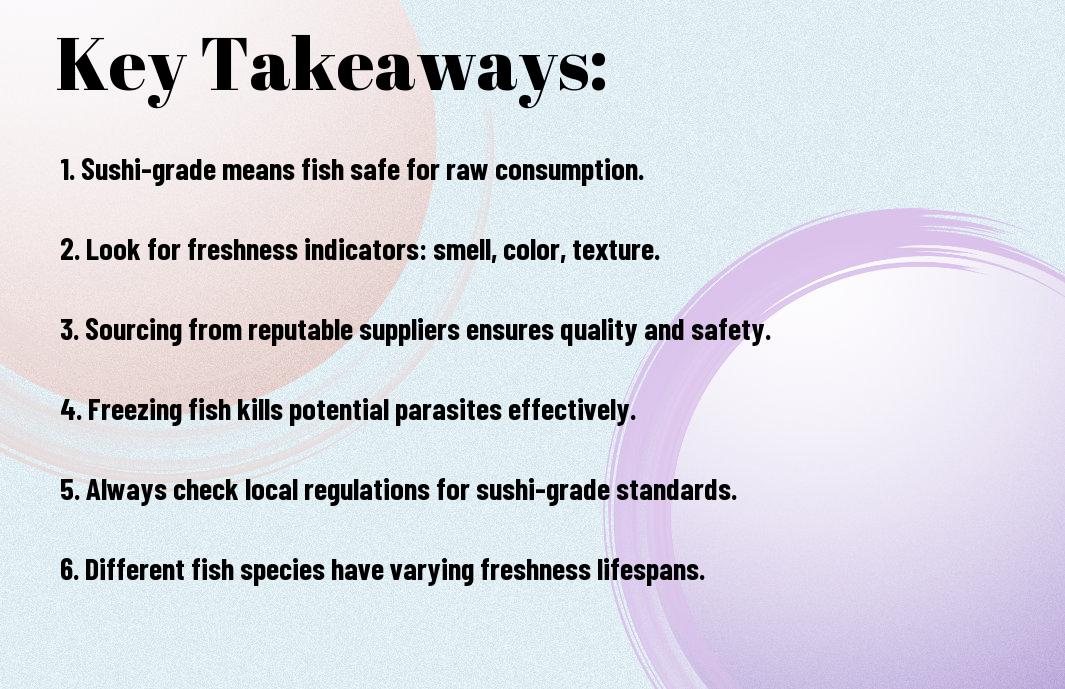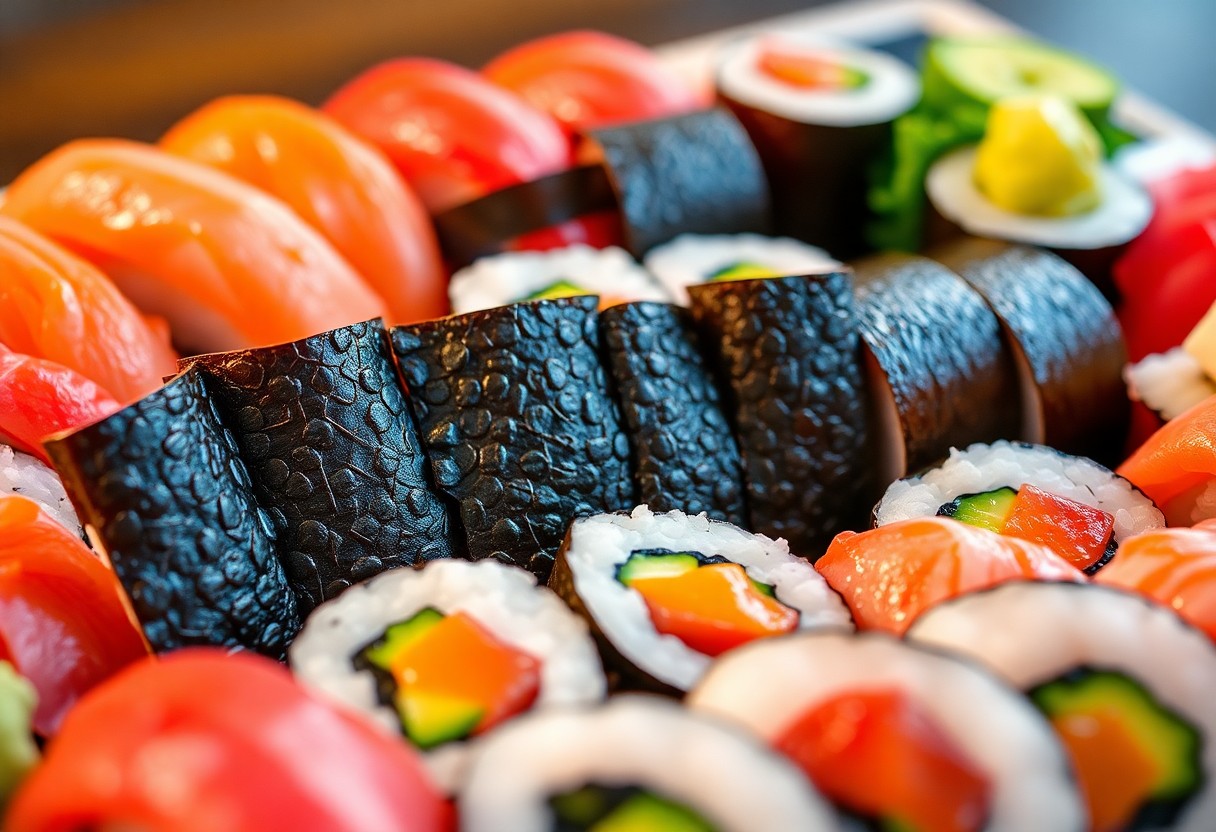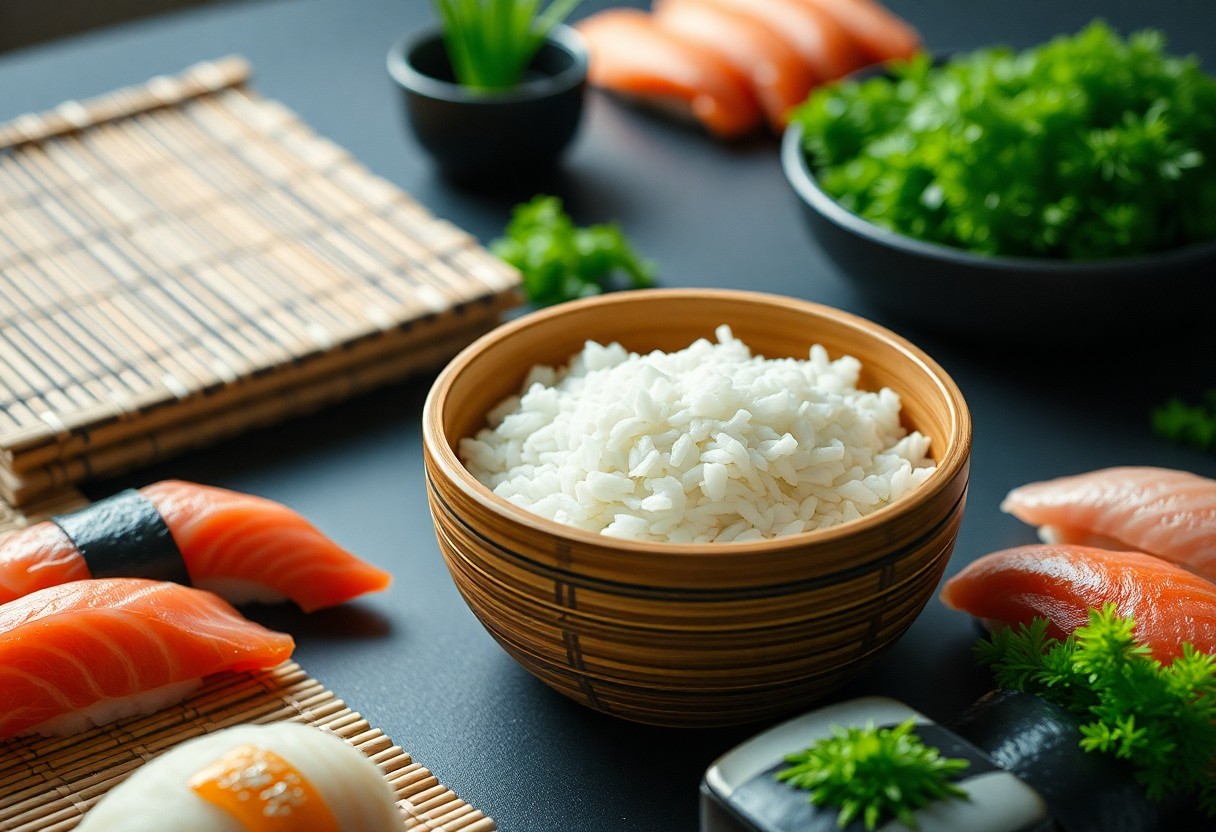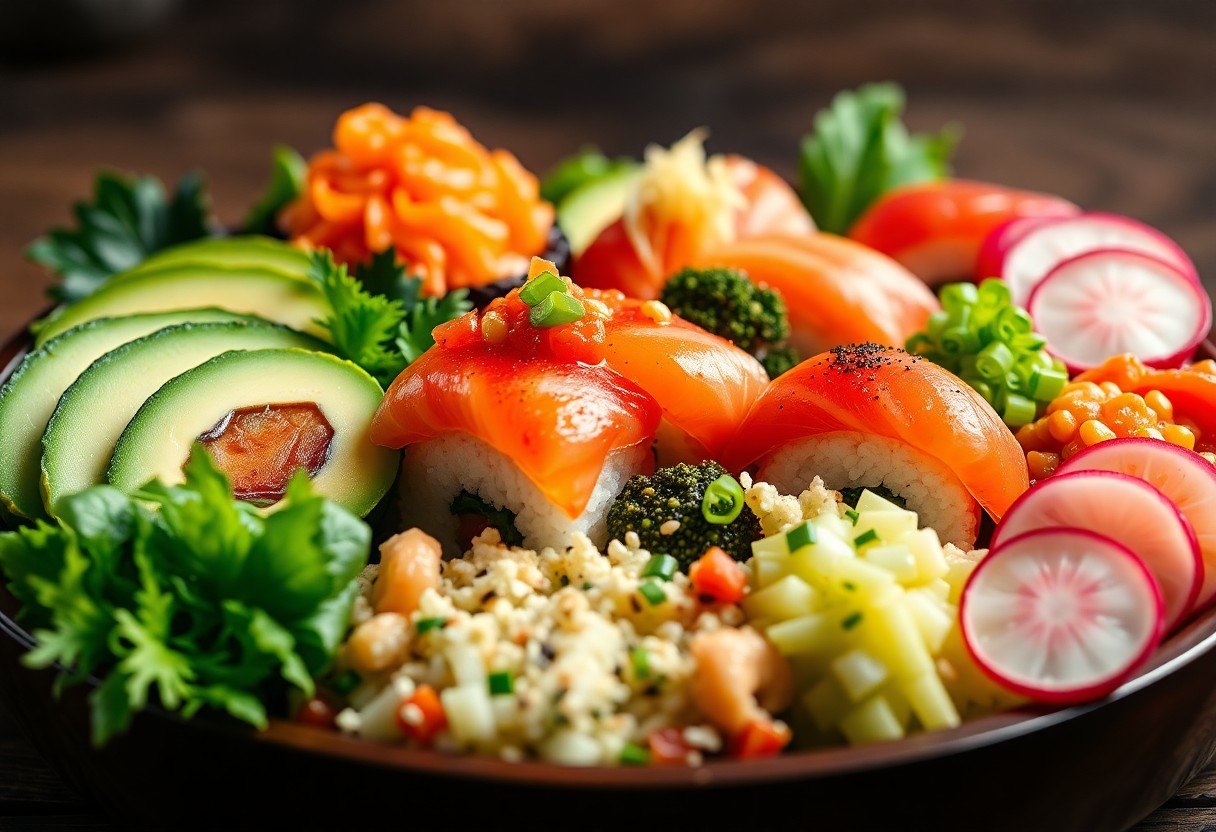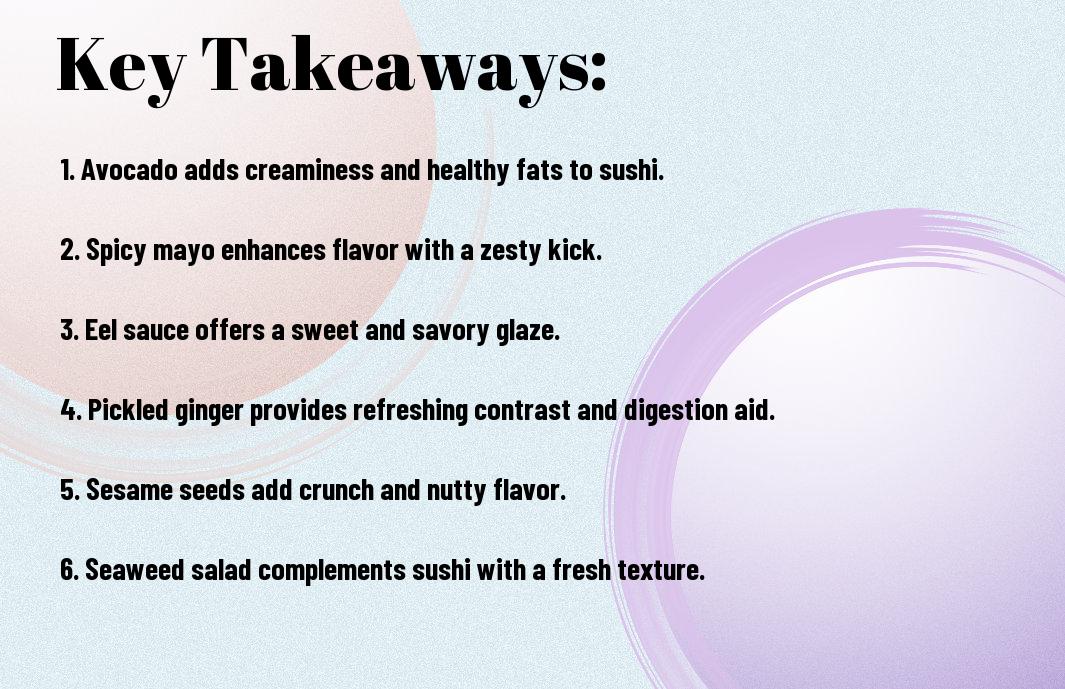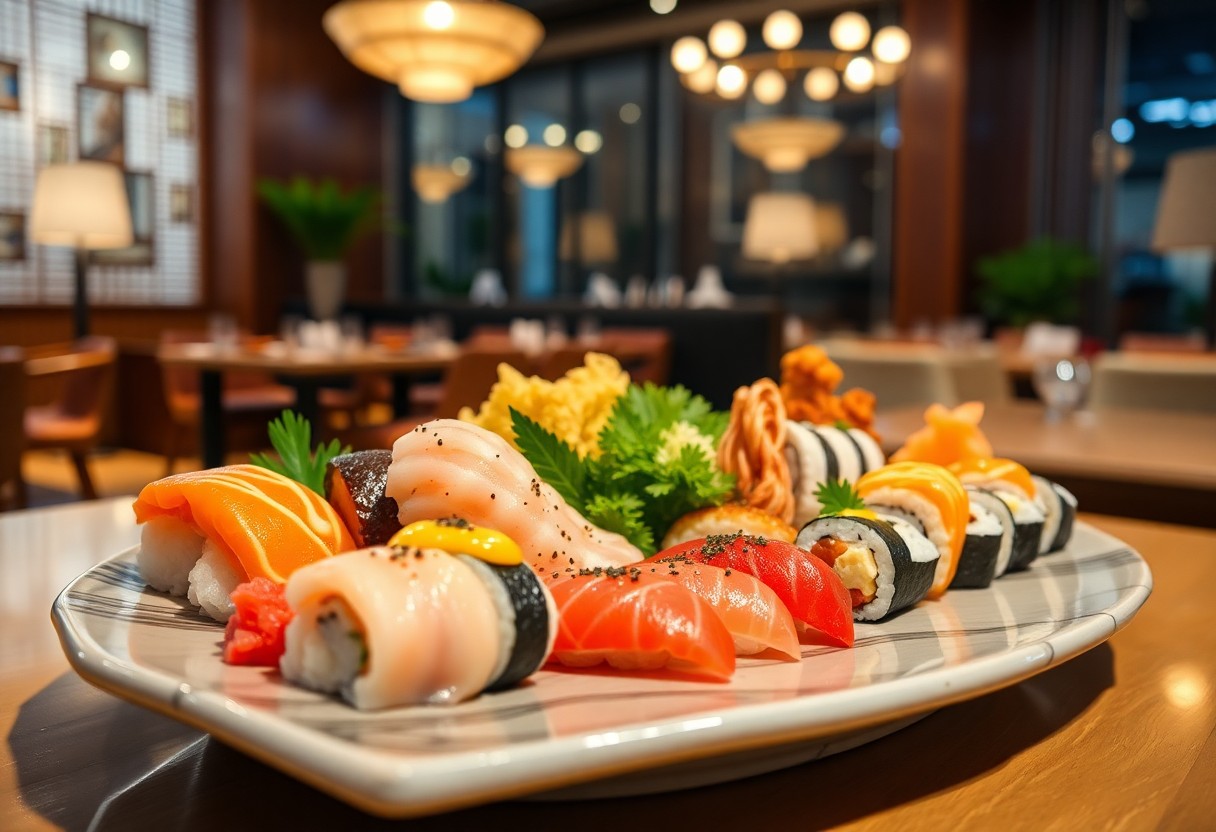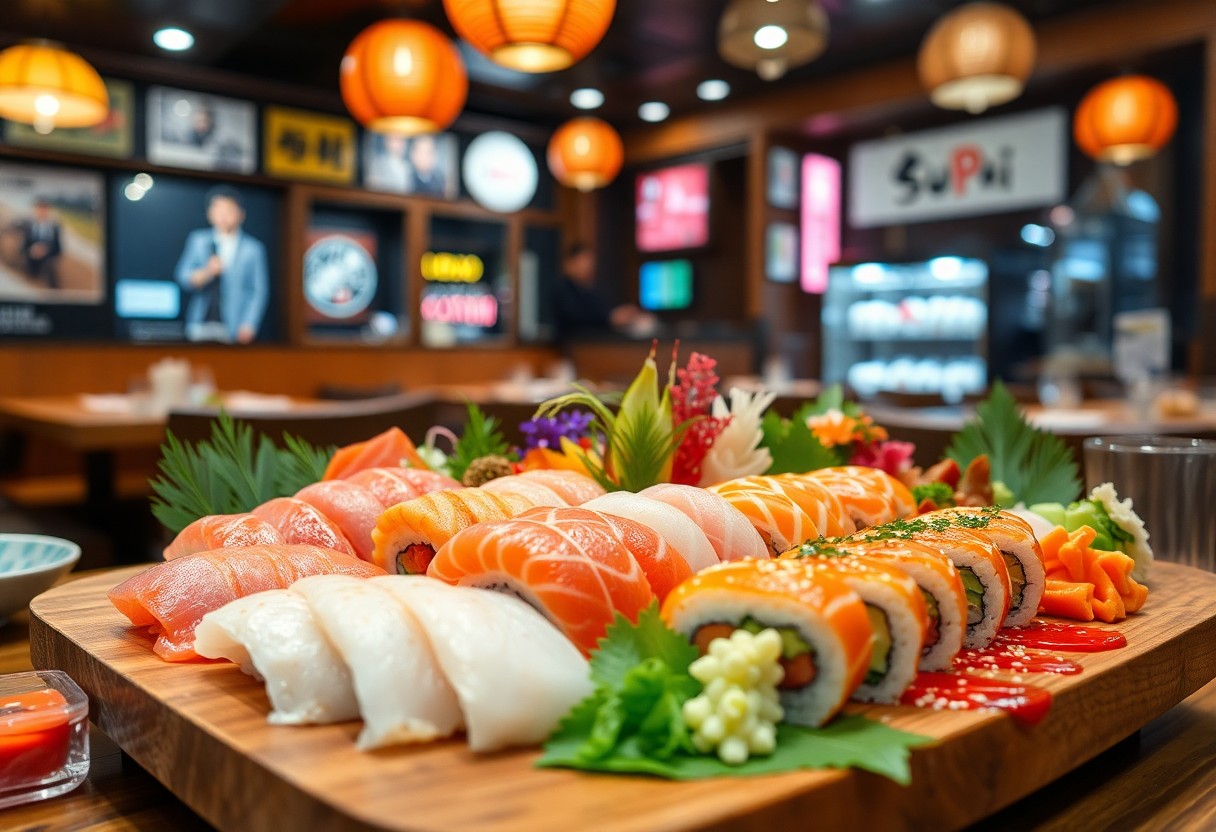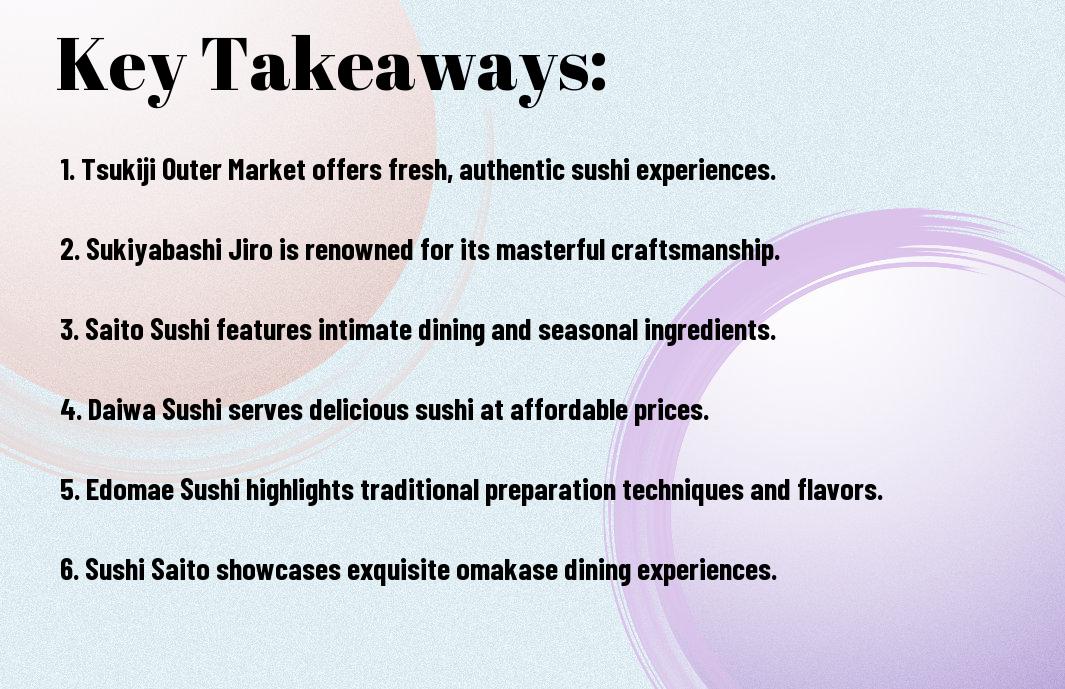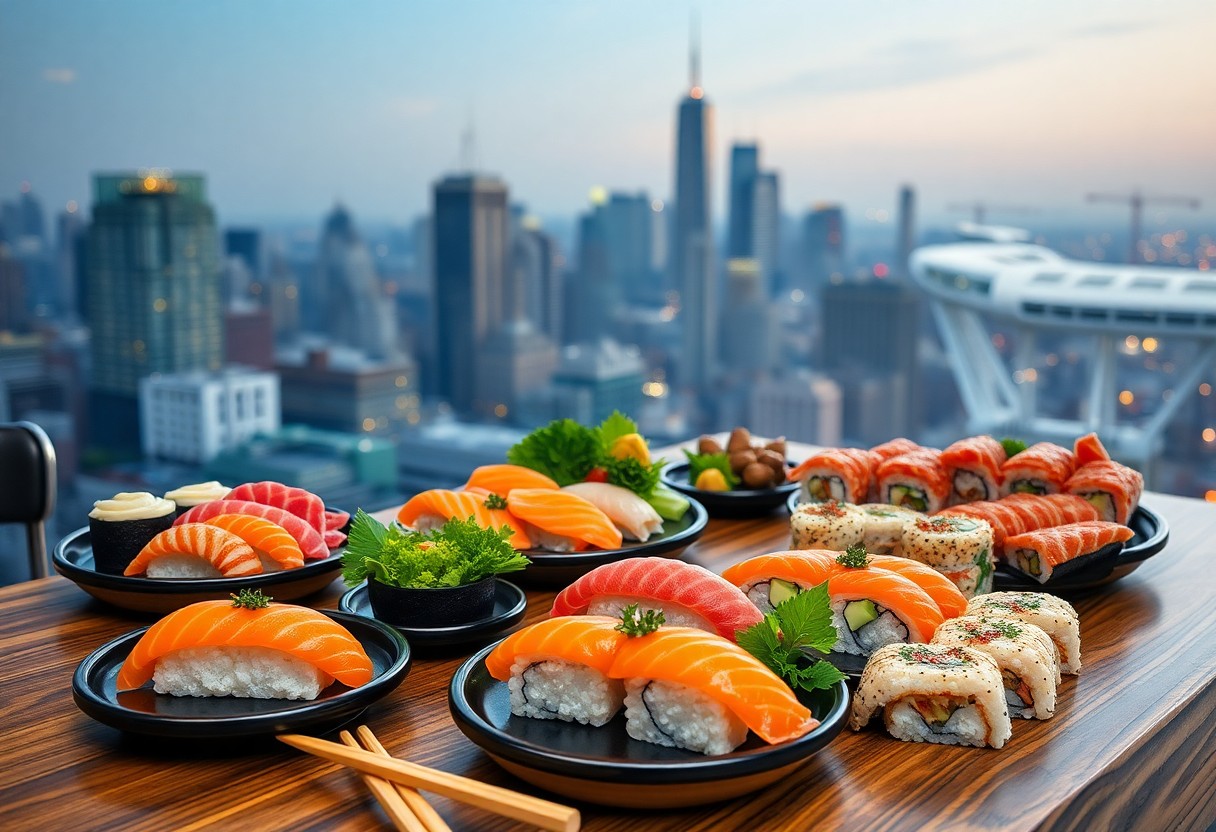Just imagine indulging in the fresh flavors of sushi that perfectly capture the essence of the sea. In this blog post, you will explore a variety of must-try sushi recipes that cater specifically to seafood lovers like you. From traditional nigiri to exciting roll combinations, you’ll find delicious options that will satisfy your cravings and elevate your culinary skills. Get ready to look into a world of delectable seafood sushi that you can easily create at home!
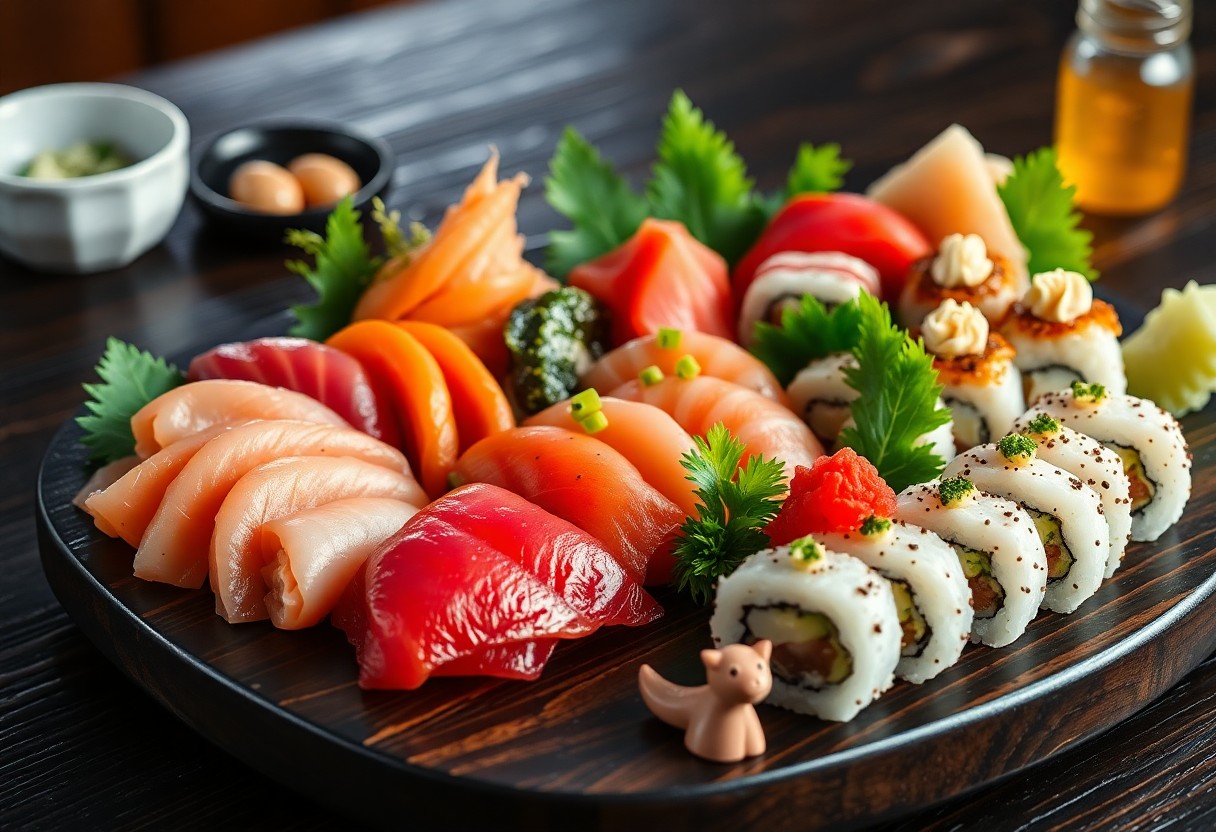
Key Takeaways:
- Diverse Ingredients: Explore a variety of seafood options beyond traditional fish, including octopus, shrimp, and crab.
- Flavor Pairings: Learn about complementary flavors and sauces that enhance the natural taste of seafood in sushi.
- Rolling Techniques: Gain insights on various rolling techniques to create sushi that not only tastes great but also looks appealing.
- Vegetable Additions: Discover how incorporating fresh vegetables can elevate the texture and health benefits of your sushi rolls.
- Presentation Tips: Master the art of presenting sushi attractively to impress guests and enhance the dining experience.
The History of Sushi
For many seafood lovers, sushi is more than just a meal; it’s an experience steeped in rich history and cultural significance. Originating from ancient Japan, its evolution has transformed into a beloved global cuisine, blending traditional practices with modern innovations to satisfy a wide variety of palates. Understanding the journey of sushi can deepen your appreciation for every bite you take.
Origins and Evolution
Along the banks of Southeast Asia’s rivers, sushi’s roots can be traced back to a method of preserving fish using fermented rice. This practice eventually made its way to Japan, where the sushi we know today began to evolve, showcasing fresh ingredients, artistic presentations, and innovative flavor pairings that reflect regional tastes.
Cultural Significance
An intricate part of Japanese culture, sushi represents the country’s connection to the sea, seasonal ingredients, and meticulous culinary artistry. Each piece of sushi is not only a dish but also a reflection of the region’s traditions and the chef’s skill, making it a form of communal storytelling that connects you with the history and culture of Japan.
Considering sushi’s cultural significance, you will find that it’s often enjoyed during special occasions and celebrations in Japan. From family gatherings to formal ceremonies, sushi embodies a sense of togetherness and appreciation for craftsmanship. As you savor each bite, you participate in this shared cultural experience while connecting with food traditions that have been cherished for centuries.
Essential Ingredients for Sushi
It’s important to stock up on the important ingredients for creating delicious sushi at home. You’ll need sushi rice, nori (seaweed), rice vinegar, and fresh seafood. For a delectable twist, check out these Shrimp Sushi Cups that highlight innovative ways to enjoy sushi. Ensuring you have these staples ready will set you on the right path to becoming a sushi aficionado.
Types of Seafood
Beside the traditional ingredients, the type of seafood you choose can elevate your sushi experience. Here’s a list of popular seafood options:
- Salmon
- Tuna
- Shrimp
- Crab
- Eel
After selecting your seafood, you can explore endless combinations to create your special rolls or sashimi plates.
Accompaniments and Condiments
Condiments play a significant role in enhancing the flavors of your sushi and elevating your dining experience. Typical condiments include soy sauce, pickled ginger, and wasabi. Pairing them with your sushi not only adds zest but also complements the seafood’s natural flavors.
A variety of accompaniments can elevate your sushi meal. You can serve your sushi with side dishes like miso soup, edamame, or even a refreshing seaweed salad. Adding these elements to your meal will not only enrich your palate but also create an authentic Japanese dining experience at home.
Classic Sushi Recipes
Unlike many other seafood dishes, classic sushi recipes are all about simplicity and highlighting fresh ingredients. Whether you’re new to sushi or a seasoned enthusiast, exploring the traditional elements can be incredibly rewarding. Check out this [discussion on Reddit](https://www.reddit.com/r/Cooking/comments/w2fozo/what_is_the_best_sushi_to_make_when_youre/) for tips on what sushi to make when you’re allergic to certain seafood.
Nigiri
On your sushi journey, nigiri is a staple you won’t want to miss. This style consists of a small mound of sushi rice expertly formed by hand and topped with a slice of fresh fish or seafood. The beauty of nigiri lies in its simplicity, allowing you to appreciate the quality of the fish and the subtle seasoning of the rice.
Maki Rolls
Classic maki rolls are another foundational aspect of sushi that you should definitely try. These rolled sushi varieties typically feature rice and fillings, such as fish and vegetables, wrapped in seaweed. They can be sliced into bite-sized pieces for easy sharing, making them a favorite among sushi lovers.
And the versatility of maki rolls means you can get creative with your ingredients! You can experiment with different fillings, like cucumber, avocado, or even cooked seafood. Plus, you have the option of making inside-out rolls, where the rice is on the outside, giving you an opportunity to showcase your culinary skills and personal flair.
Creative Sushi Variations
Keep your taste buds excited by trying creative sushi variations that transcend the traditional rolls. Experiment with unique ingredients and presentations to elevate your sushi experience. From vibrant sushi burritos to playful sushi tacos, these inventive dishes not only please the palate but also add a fun twist to your seafood adventures. Embrace your culinary creativity and discover how these variations can become your new favorite way to enjoy sushi.
Sushi Burritos
Variations of sushi burritos bring all the flavors of traditional sushi into a portable and customizable format. You can choose your favorite fillings, from fresh fish and vegetables to zesty sauces, all wrapped in a large sheet of nori. These handheld delights make for a perfect on-the-go meal, allowing you to savor sushi anytime, anywhere.
Sushi Tacos
Any sushi lover will appreciate the fun and freshness of sushi tacos, where you combine the best of both worlds. You can fill crispy seaweed shells with your choice of sushi-grade fish, vibrant veggies, and delicious sauces, creating a delightful fusion that tantalizes your taste buds. Sushi tacos are not only visually appealing but also perfect for sharing with friends at gatherings!
Even as a vessel for your favorite sushi ingredients, sushi tacos are versatile and adaptable. You might opt for spicy tuna, tempura shrimp, or even grilled veggies mixed with creamy avocado. The crispiness of the taco shell combined with the freshness of the fillings offers a refreshing bite that stands out from traditional sushi, ensuring every bite is a burst of flavor. Dive into this exciting sushi variation and let your creativity shine with diverse fillings and garnishes!
Sushi Preparation Techniques
To create exceptional sushi, mastering preparation techniques is crucial. This involves perfecting rice cooking, cutting fish, and presenting your sushi attractively. Each step contributes to both the taste and overall experience, ensuring your sushi is not only delicious but visually appealing. With practice, you’ll gain the confidence to bring your sushi dreams to life.
Rice Preparation
Among the key elements of sushi making, rice preparation stands out. You should begin with high-quality sushi rice, thoroughly rinsing it to remove excess starch. Once washed, cook the rice until fluffy and let it rest. Season the cooked rice with a mixture of rice vinegar, sugar, and salt to achieve that signature flavor, ensuring it’s well-combined before use in your sushi creations.
Cutting and Presentation
Presentation plays a vital role in sushi preparation. Your sushi should not only taste good but also look enticing. Start by slicing your fish or vegetables with a sharp knife at an angle, creating uniform pieces. Arrange your sushi on a clean, attractive plate, garnishing with wasabi, pickled ginger, or edible flowers to elevate its visual appeal.
This attention to detail in cutting and presentation will enhance your sushi experience. You can consider using contrasting colors and shapes to create a visually appealing dish. By cutting ingredients carefully and arranging them thoughtfully on the plate, your sushi will tempt both the eyes and taste buds. Experimenting with different styles can lead to you discovering presentations that showcase your culinary skills beautifully.
Pairing Sushi with Beverages
Now that you have your sushi ready, enhancing your dining experience with the right beverages is necessary. The right pairing can elevate the flavors of your sushi, complementing the delicate tastes and adding another layer to your meal. Consider the profiles of your sushi when selecting beverages to create a harmonious balance that enhances rather than overwhelms your dish.
Sake and Wine
An excellent choice for pairing with sushi is sake, which is known for its intricate flavors that beautifully complement the freshness of seafood. Opt for a Junmai sake for a clean finish or a fruity Daiginjo for a more aromatic experience. If you prefer wine, a crisp Sauvignon Blanc or a light Pinot Grigio can also enhance the taste of your sushi without overpowering it.
Non-Alcoholic Options
Beside alcoholic beverages, you have a variety of non-alcoholic options to enjoy with your sushi. Flavored sparkling waters, green tea, or even a refreshing cucumber lemonade can serve as delightful companions to your meal, enhancing the flavors without the effects of alcohol.
At your sushi dinner, consider offering a selection of non-alcoholic options that cater to all guests. Herbal teas or lightly flavored fruit juices can provide a refreshing contrast to the savory elements of the sushi. Additionally, a chilled matcha latte or a robust iced green tea can enhance the experience, offering both flavor and health benefits, allowing your culinary adventure to remain inclusive yet satisfying for everyone at the table.
Final Words
Considering all points, your culinary journey into the world of sushi opens up a delightful realm for seafood lovers. By experimenting with must-try recipes, you can elevate your dining experience and impress your guests. Don’t miss out on the opportunity to try Kani Sushi (Spicy Crab Roll) – Easy Steps, which is a fantastic addition to your repertoire. Creating these dishes not only enhances your skills but also allows you to enjoy the fresh, vibrant flavors that sushi has to offer. Dive in and savor every bite!
Q: What types of seafood are typically used in sushi recipes for seafood lovers?
A: Sushi for seafood lovers often includes a variety of fresh and flavorful seafood options. Some of the most commonly used ingredients are tuna, salmon, shrimp, and scallops. Additionally, seafood such as mackerel, octopus, and eel are also popular choices. Each type of seafood brings its unique taste and texture, allowing for a diverse range of sushi rolls and nigiri.
Q: Are there any special techniques for preparing sushi that seafood lovers should know?
A: Yes, there are several techniques that can enhance your sushi-making experience. First, it’s important to properly select and handle your seafood to ensure its freshness and quality. Techniques such as slicing fish at a specific angle or using a sharp knife can affect the presentation and texture. Additionally, learning to prepare sushi rice correctly is vital, as its flavor and stickiness play a significant role in the overall dish. Lastly, mastering the art of rolling sushi tightly can bring your creations to life.
Q: Can I find sushi recipes that cater to specific dietary restrictions within this category?
A: Absolutely! Many sushi recipes can be modified to accommodate dietary restrictions while still being appealing to seafood lovers. For instance, if you prefer gluten-free options, you can use tamari instead of soy sauce and ensure that any added sauces are also gluten-free. Additionally, there are vegetarian and vegan sushi recipes that utilize seafood alternatives, like avocado or marinated vegetables. By being mindful of the ingredients, you can create a delicious sushi experience that fits your dietary needs.
